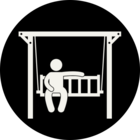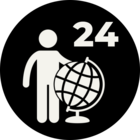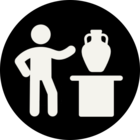Hi all,
I’d like to classify polygons by shape, these might include: pie shaped, L shaped, T shaped.
I was originally thinking that I’d have to convert them to raster and use some sort of supervised classification. Another method might be to convert them to centerlines and compare their linework: a T shape polygon would have 1 or 2 lines at the top, meeting at 90degrees to another line point downwards
Solved
Classifying polygon by shape
Best answer by ctredinnick
For Circle, Square, you have bounding box and circularity approaches. L, or T shaped sounds like you’re interested in the number of concave parts of the shape.
You could Generalise it to remove noise/complexity, Thin, with a tolerance like half the distance across the polygon. HullReplacer, then clip it against itself to count the concave parts.
It’s difficult to know the limitations because it’s dependent on how you’ll use it.
A raster classification would be viable if one already exists. If it doesn’t then you have to weigh the time to make it, and how long it will be useful for.
Reply
Rich Text Editor, editor1
Editor toolbars
Press ALT 0 for help
Enter your E-mail address. We'll send you an e-mail with instructions to reset your password.















